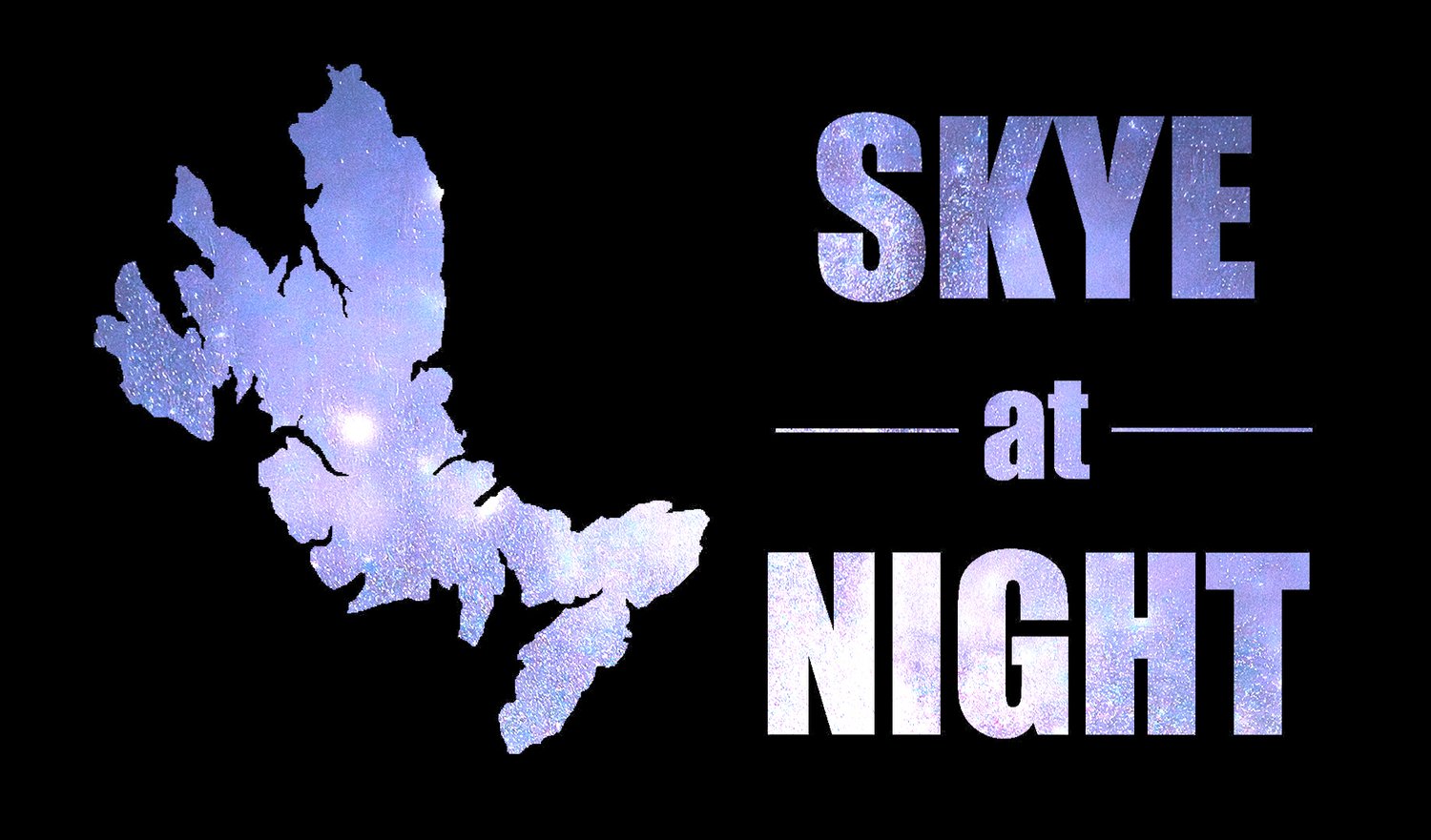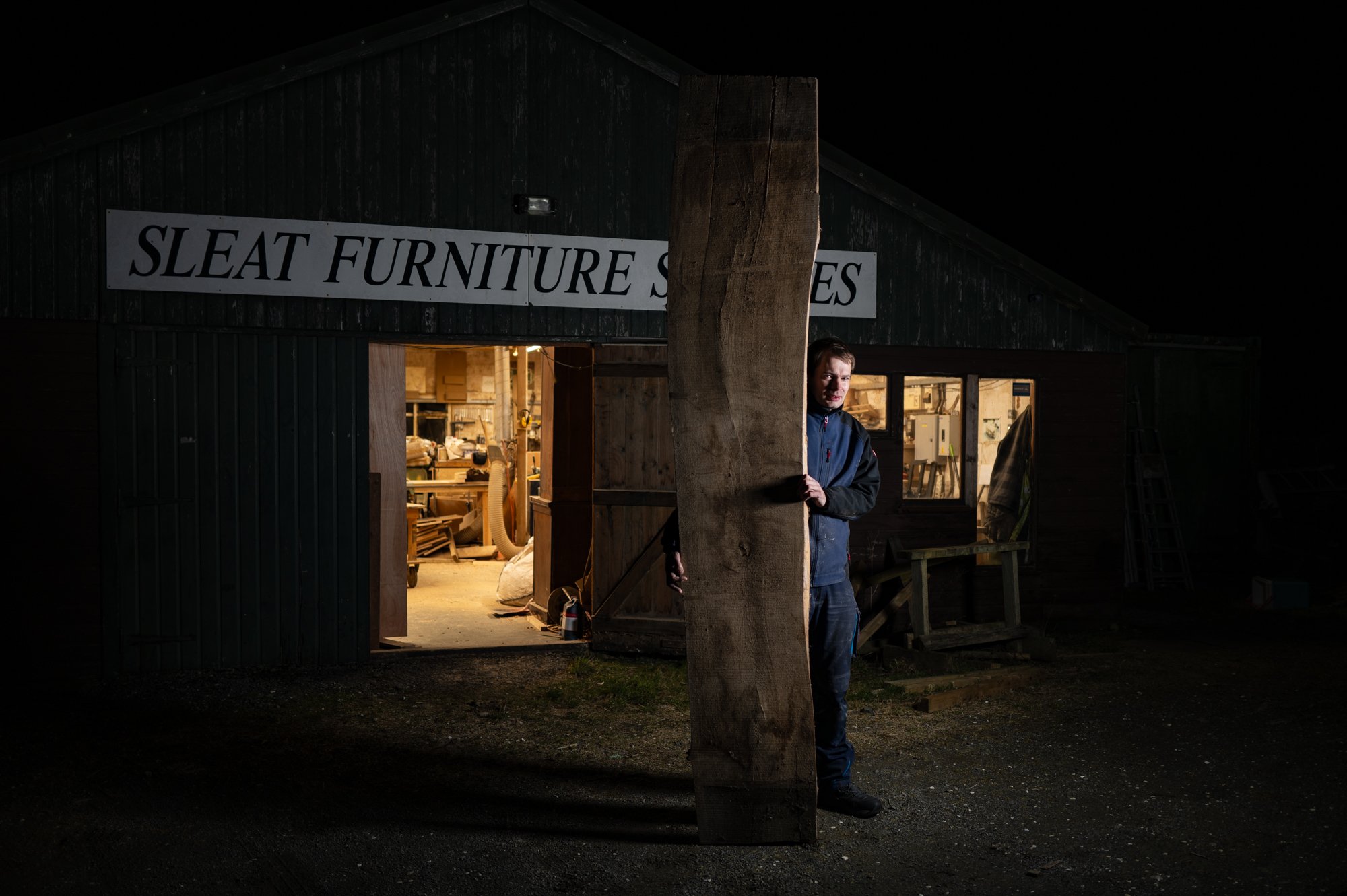The Furniture Maker
Stuart Shone with a massive piece of elm.
I’ve always admired people who work with wood. I enjoy doing so myself, but my efforts never match my expectations.
Stuart Shone is the opposite of me. I may be biased as I’m a customer of his. The close attention to detail and finishing quality he manages is really exceptional, and worth waiting for. He creates bespoke furniture in his large workshop on the Sleat peninsula, including individually designed kitchens, dining tables (I have a 10-seater that he made for me), and all manner of other furniture. With a family to look after and kids to take to and pick up from school, he’s often working well into the dark nights especially in winter.
Using a vicious-looking table saw.
For this shoot, I knew I wanted one large portrait format image facing left to right, and an additional smaller landscape format shot. This is because of the layout of the double-page spread I have allocated in the book, with the portrait shot taking up a whole left page and the landscape shot taking half the opposite page, with text underneath.
From a subject matter perspective, I wanted to have a detail photo of Stuart “in action” using some of the industrial tools in the workshop, and a context-type photograph to give a feel for what his workshop is like.
This brings us to arrival at his workshop. Having been there before, I knew roughly what to expect, but hadn’t seen it at night. Lighting is all-important. With bright strip-lights everywhere, it was immediately obvious it would be a tricky session.
Throughout this project, it’s important to keep a consistent style, and make it clear that it is nighttime out there. A very brightly lit workshop doesn’t really carry that message, so it’s necessary to shape some lighting to keep that look & feel with the other pictures in the series.
I asked Stuart what he thought would work best. I invariably find that my subject will have some great ideas that are usually a lot better than mine. After a wander around the workshop, we settled on a table saw on one side of the workshop, and a router setup at the other end.
Lighting setup for the table saw shot. Spot the snapper.
Above is a “naked eye” exposure showing how bright it was in the workshop. A small octabox is just behind Stuart’s head, and another flash lower-right are what I used to get the lighting how I wanted it. The octabox casts a very gentle light which is great for portraits, especially if positioned quite close in. The other flash ensures that there is some definition on the opposite side of Stuart’s face, and a bit of a rim light to separate the dark background and his dark fleece top.
For the table saw shot, I did have to turn off the strip lights at that end of the workshop to ensure that my own lights were “in charge”. I’m tucked away low down behind that board to get a nice “V” shape in the foreground to “command” the eye towards Stuart as the main subject. For the router shot below I had to work with the strip lights so had to expose accordingly.
Similar lighting to the previous shot with octabox for main and naked flash for fill.
Coming onto exposure settings, with the composition set up, the exposure and light balancing is next. To emphasise that it’s nighttime, I deliberately underexposed the scene. I always set the “ambient” exposure first, and then add artificial light to get the result I am looking for.
I wanted a shallow depth of field as well, determining the widest aperture of f/1.7 on my Leica Q3. That camera is blessed with a very fast flash sync speed, allowing me to remove quite a lot of ambient light by raising the shutter speed to 1/500th and still triggering the main flash with my Pocket Wizard radio triggers (the 2nd flash was set as an optical slave). The Leica Q3 really is an exceptional camera for this sort of work.
Chatting through options for the table-saw shot.
I always try a few variations on any given set up to avoid getting home to the inevitable “why didn’t I just get down a bit lower” thoughts.
With a couple of nice variations of indoor pictures sorted out, now it was time to do the outdoor “context setting” picture. I asked Stuart what his favourite wood is (elm) and if he had a massive piece to hold upright, like in those old-style surfing shots where the surfer is holding a 10-foot surfboard.
He emerged from his woodshed with a ludicrously enormous plank of elm that was about 2 inches thick and weighed a ton. I’ve no idea how he carried it. The elm is from a local tree and it’s been drying naturally for 8 years now.
Unfortunately the wind had picked up, so it was like trying to hold a sail. Poor Stuart was battling to keep it upright and to make matters worse it was very near freezing. I am indebted to Elizabeth who was assisting me (and took the behind-the-scenes pics above) for holding onto the light stand of the octabox which was the only light I used. It took a bit of trial and error to get the positioning right to light the edge of the elm plank, light Stuart, and also get enough light on the workshop sign without casting a shadow. My positioning was important to be able to also see into the workshop to maintain the context of the whole shoot.
In the end, we were done in under an hour, with about 20 minutes from the first photograph to the last (we chatted a lot at the start!). The results are just what I wanted - warm feeling inside shots where you can almost smell the sawdust, and a scene-setting outdoor shot with an eye-catching setup that also shows the raw material. Thanks to Stuart for being so cooperative.





